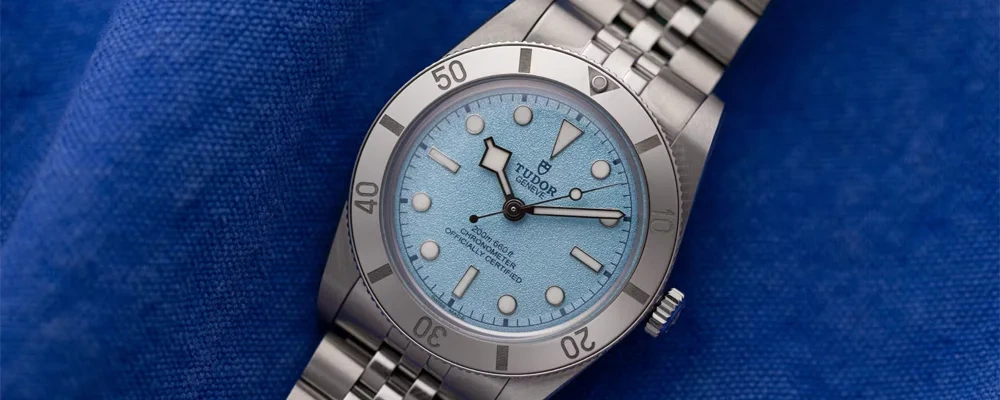A Fascinating Journey: Unveiling the Legacy of F.P. Journe
The remarkable tale of F.P. Journe and his eponymous luxury watch brand stretches back to 1957 when François-Paul Journe was born in Marseille, France. While the brand itself was officially established in 1999, Journe's relentless pursuit of horological mastery began long before that, shaping him into the visionary watchmaker he is today.
Journe's passion for watchmaking was ignited during his formative years. At a mere 14 years old, he embarked on his technical education at a prestigious college, eventually graduating from the renowned Paris watchmaking school in 1976. After his studies, he started to work in his uncle’s clock repairing shop in Paris and developing a great fascination in 18th and 19th century watches. It was a pivotal moment that set him on a trajectory towards greatness.
After being inspired by a pair of pocket watches worn by George Daniels, who would often visit his uncle's shop, Journe successfully created his inaugural tourbillon pocket watch merely two years after completing his studies. Under the mentorship of Daniels, he honed his skills and embarked on prestigious projects, including designing a planetarium mechanism for Asprey in London.
In 1983, Journe's unwavering dedication paid off when he completed his tourbillon, meticulously creating every component, including the gold and silver case. Establishing his workshop in 1985, Journe began crafting bespoke watches, culminating in the unveiling of F.P. Journe's first automatic chronometer pocket watch in 1986, featuring remarkable complications.
Throughout his career, Journe received numerous awards, such as the Fondation Marcel Bleustein-Blanchet pour la Vocation prize and the Balancier d'Or Prize. In 1989, F.P. Journe settled in Geneva, Switzerland, establishing a movement manufacturer and presenting his first wristwatch, an exquisite piece crafted entirely from 18k gold in 1991.
The turning point arrived in 1999 with the launch of the Tourbillon Souverain, marking the official entry of F.P. Journe into the global watchmaking stage. Each watch showcased the brand's signature - F.P. Journe Invenit et Fecit - signifying that any F.P. Journe watch is an original creation, conceived and crafted by Journe himself or under his direct supervision.
Expanding rapidly, F.P. Journe's workforce grew from one employee to 50 by 2000, enabling the production of 3 to 4 watches per day. In 2001, Journe introduced the Octa calibre, his first self-winding mechanical movement, and collaborated with Harry Winston on the Opus One collection.
F.P. Journe's international presence began in 2003 with the opening of its first boutique in Tokyo's vibrant Omotesando district, followed by a Hong Kong boutique in 2006 and the first European boutique in Geneva in 2007. The brand continues to captivate enthusiasts worldwide with its exceptional timepieces, including boutiques in the United States.
In 2018, Chanel acquired a minority stake in F.P. Journe, recognizing the brand's exceptional talent and enduring appeal. Notably, Journe's influence extends beyond his own brand, as Rexhep Rexhepi, an emerging independent watchmaker, refined his skills at F.P. Journe before establishing his own brand, Akrivia.
François-Paul Journe's unwavering commitment to horological excellence defines the legacy of F.P. Journe. Each timepiece bearing the brand's name reflects the perfect fusion of traditional handiwork and innovative design, captivating the world of haute horlogerie.
Breguet's Influence in the Development of F.P. Journe
According to his own words, thanks to the book from George Daniels called The Art of Breguet, Journe ‘learned patiently on my workbench how to make my first watch’. The launch of his company was with the model Tourbillon Souverain – tourbillon again being connected to Breguet, who was the genius inventor behind this sought-after complication. Obviously, the impact of the revolutionary 18th century watchmaker on the contemporary French prodigy is significant, so how would they compare in today’s world?
In today's world, both François-Paul Journe and Abraham-Louis Breguet continue to hold significant positions in the horological landscape, even if in different contexts. While Breguet's legacy is firmly established as a pioneer and master watchmaker of the 18th century, Journe represents a modern-day horological genius who draws inspiration from Breguet's innovations.
Breguet's contributions to the watchmaking industry is hard to best, especially thanks to inventions such as tourbillon, Breguet hands or laying foundations for the most sophisticated calendar complication, the perpetual calendar. His watches are known for their craftsmanship, precision, and timeless elegance. Breguet's name is synonymous with excellence and prestige.
On the other hand, Journe has managed to carve out his own niche by blending traditional 18th and 19th century watchmaking techniques with contemporary design aesthetics. Considered one of the best, if not the very best, watchmakers alive, his watches blend technical advancements and artistic expression, showcasing his deep knowledge of the craft. Journe has gathered a loyal following for his distinctive timepieces, which are known for their impressive attention to detail and exceptional mechanical complexity.
While Breguet's influence on Journe is evident in the tribute paid to him through the use of complications like the tourbillon or inspiration from his designs, Journe has also forged his own path by pushing the boundaries of horological innovation. His watches, with their unique movements and unconventional designs, appeal to a new generation of watch enthusiasts seeking both tradition and avant-garde craftsmanship.
Breguet and Journe share a love for the artistry of watchmaking, but they each hold their own remarkable place in their own time periods. Breguet's historical importance continues to be recognized even to this day, while Journe represents the mastery of watchmaking in the present era by combining tradition with modern innovation. Together, they symbolize the progression watchmaking throughout history.
Related Articles
Richard Mille re-releases their signature model in titanium - is it a good choice?
